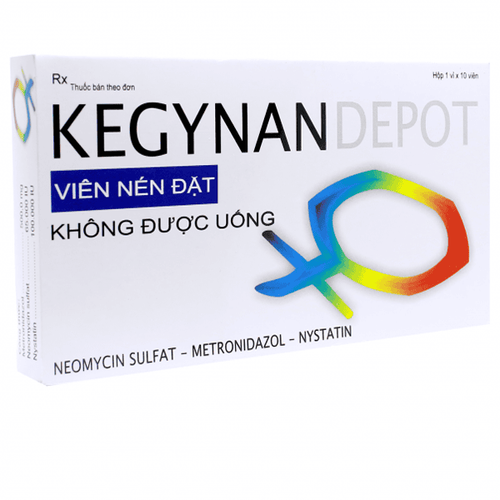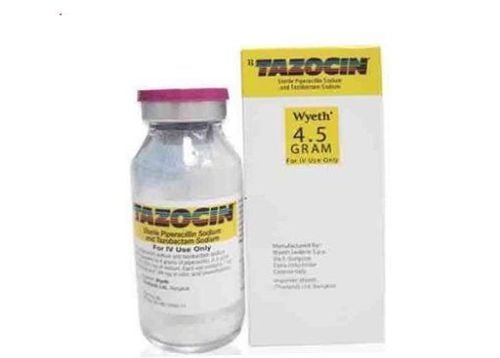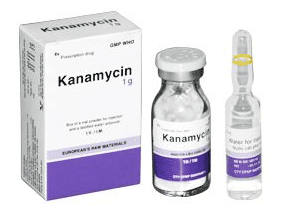This is an automatically translated article.
Posted by Specialist Doctor II Pham Thi Khuong - Infectious Doctor - Pediatric Center - Vinmec Times City International Hospital
Botulism is caused by the toxin of Clostridium botulinum and affects the peripheral nervous system. Botulism can be acquired without causing disease if the toxin is swallowed, injected, or inhaled. Symptoms include symmetric cranial nerve palsy with bilateral weakness and flaccid paralysis without sensory disturbances. Diagnosis is by clinical and laboratory findings for toxins. Supportive and antitoxin therapy.
1. Infant botulism
Infant botulism affects babies from 1 week of age to 12 months of age. Most cases occur between 2 and 8 months of age, and the median age of onset is 3 to 4 months. Infants get botulism after consuming the bacteria's spores, which then grow and multiply in the intestines to form toxins. The source of infant botulism may be honey, but is more likely to come from contact with soil contaminated with bacteria. The presentation and severity of the disease varies widely. Common clinical manifestations are:
Constipation (usually the first sign) Muscle weakness Weak crying Irritability Drooling Drooping eyelids Fatigue Difficulty feeding, difficulty swallowing Paralysis...

Trẻ quấy khóc, bỏ bú là một dấu hiệu của ngộ độc thịt
2. Wound poisoning
Wound botulism differs slightly from food poisoning in some clinical signs such as: Wound botulism does not have the gastrointestinal symptoms common to food poisoning. products and have a longer incubation period, about ten days. Wound poisoning is the only type of poisoning commonly associated with fever and leukocytosis. One study found that nearly half of the patients examined had leukocytosis during their clinical course. Fever and leukocytosis may result from concurrent bacterial infection of the wound by non-Clostridial species.
Electromyography showed abnormalities (electromyography - EMG) and nerve conduction in patients with poisoning including decreased dual muscle action potentials and M-wave amplitudes, overactive action potentials and reflexes. frequency-varying response to repetitive nerve stimulation.
3. Differential diagnosis
The differential diagnosis for food poisoning, wound and enteric poisoning in adults is as follows:
3.1. Lambert-Eaton myasthenic syndrome (LEMS)
Lambert-Eaton myasthenic syndrome (LEMS) is a rare autoimmune disease. It should be ruled out by electromyography (EMG) or blood tests that look for the presence of antibodies against VGCC (voltage gated calcium channel). In the case of Lambert-Eaton myasthenia gravis, the nerve endings that control the amount of acetylcholine produced in the body are severely damaged by the immune system. Acetylcholine is an active neurotransmitter responsible for triggering muscle contractions, thereby allowing the body to perform movements such as walking, shrugging, hand... nerve will lead to deficiency of acetylcholine and cause myasthenia gravis. On the other hand, some studies have shown that the link between lung cancer and Lambert-Eaton myasthenia gravis is due to mutant cells capable of producing the protein VGCC (voltage gated calcium channel), which plays an essential role in the process. acetylcholine production. An abnormal increase in the amount of VGCC stimulates the immune system to produce antibodies to fight.
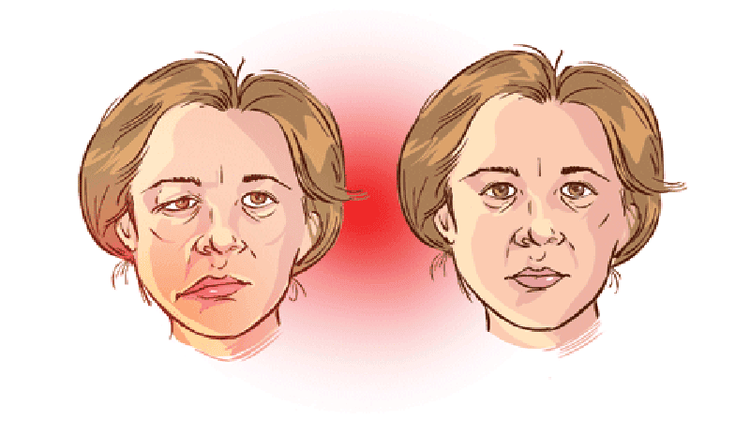
Hội chứng nhược cơ Lambert-Eaton (LEMS)
3.2. tick paralysis
Tick paralysis is a rare, progressive paralysis that can occur when intoxicated by the Ixodidae tick and is kept for several days. In North America, some species of Dermacentor and Amblyomma ticks cause paralysis by secreting neurotoxins found in saliva. The poison is not present in the saliva early in the feeding process, so paralysis only occurs when a tick has eaten for several days or more. A single tick can cause paralysis, especially if attached to the back of the head or close to the spinal cord. Symptoms and signs include loss of appetite, lethargy, muscle weakness, poor coordination, slow heart rate, and paralysis. Signs of myasthenia gravis or respiratory paralysis may be present. The diagnosis in this case is clinical. Tick paralysis should be considered in North American patients with acute flaccid paralysis or myasthenia gravis; ticks can be found on body surfaces and removed.
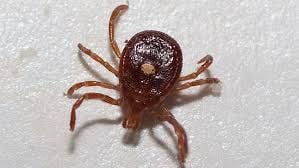
Liệt do ve Dermacentor và Amblyomma là một bệnh lý hiếm gặp
3.3. Guillain-Barré . syndrome
Guillain-Barré syndrome is an autoimmune disease that manifests in inflammation of the spinal nerve roots and demyelination of the nerves.
Clinical presentation: The typical presentation is acute, rapidly progressive quadriplegia (with legs heavier than arms), accompanied by loss of tendon reflexes. Cranial nerve palsy may be present, most commonly bilateral peripheral nerve palsy. The most dangerous is paralysis of the respiratory muscles. Sensory disturbances, if present, are usually less pronounced: distal paresthesias or profound hypoesthesia distributed in a stocking pattern; pain of nerve origin distributed in the muscles, in the spine; dysesthesia or increased pain in the extremities. Autonomic disorders : increased or decreased blood pressure; arrhythmia, cardiac arrest. There is usually no fever at the onset of neurological symptoms. Subclinical: Lumbar puncture: Cerebrospinal fluid: There is protein-cell dissociation: protein > 0.5g/liter, cells <10/mm3. Electromyography and nerve conduction: Myelin damage prolongs distal latent time and F waves, deceleration or conduction of nerves, conduction obstruction due to segmental loss of myelin. Axonal damage: F waves may be lost, and motor and sensory responses may be reduced or lost. Immunological tests: Glycolipid antibodies such as: GQ1b. GM1, GD1a, GalNac-GD1a, GD1b. GT1a. GD1b...
3.4. Polymyositis
Polymyositis is classified as an autoimmune disease with the underlying lesion being chronic inflammation of the striated muscle bundles (polymyositis) with the characteristic presentation of bilateral symmetrical proximal muscle weakness. In addition to muscle or skin involvement, these patients often have symptoms in the joints and lungs. In addition, it can be in the cardiovascular and digestive system...
Diagnostic criteria of Tanimoto et al. 1995. This criterion has a sensitivity of 98.9% and a specificity of 95.2%. The diagnosis of polymyositis is confirmed when at least 4 of the following 8 symptoms are present:
Myalgia caused by myositis or spontaneous pain Proximal muscle weakness Increased serum CK (creatine kinase) or aldolase Electromyography with changes of muscle origin: short duration, polyphasic motor units with spontaneous tremors Evidence of myositis on muscle biopsy: rhabdomyolysis with degeneration and necrosis of muscle fibers (active phagocytosis). , central nodule or evidence of activity) Arthritis (no erosive radiograph, no joint destruction) or arthralgia Systemic symptoms: Fever > 37°C, elevated CRP or elevated erythrocyte sedimentation rate > 20mm/h using the Westegren method. Anti-Jo-1 antibody positive Stroke and heavy metal poisoning: If the body is poisoned with heavy metals such as lead, arsenic (arsenic), cyanide, mercury (mercury), it can cause numbness in hands and feet. very annoyed.
Less common diagnoses include tetrodotoxin and shellfish poisoning: Exposure to tetrodotoxin occurs after eating puffer fish or having direct contact with blue-ringed octopus. Common clinical manifestations are stiff mouth, difficulty swallowing, dysarthria/slurred speech and other signs such as: Dizziness, near unconsciousness due to position/postural unconsciousness, anxiety, loss of reflexes airway protection.
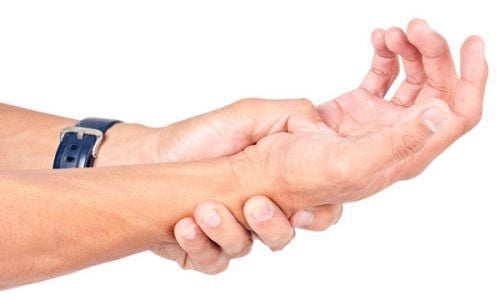
Hình ảnh người bệnh bị viêm đa cơ
3.5. Paralysis linked to antibiotics
Side effects of drugs such as rimifon (a major tuberculosis drug, also known as INH), lithium, nitrofurantoin, cisplatin, hydralazine, amitriptyline, sulfonamides, amiodarone, metronidazole, dapsone, disulfiram, chloramphenicol... all forewarned. These drugs are used to treat many diseases from tuberculosis, infections, leprosy, insomnia, depression, arrhythmia... Alcoholics, chronic infections, HIV/AIDS, shingles, leprosy, cancer cancer, hypothyroidism ... also often have symptoms of numbness in hands and feet. People who are injecting streptomycin (an antibiotic to treat tuberculosis) may also experience side effects such as numbness around the lips, a feeling of numbness like ants crawling all over the body. This is a mild reaction, easy to diagnose and will go away after a while. The differential diagnosis of infant botulism is discussed separately.
4. Diagnosis of botulism
4.1. Clinical diagnosis
Based on the patient's acute onset with signs of cranial nerve palsies, symmetrical progressive weakness, especially in the absence of fever, and no sensory disturbances. In neonates, botulism should be suspected at acute onset due to weak suckling, fussiness, inactivity, and constipation. Take the patient's medical history carefully.

Dựa vào những dấu hiệu của trẻ, bác sĩ sẽ tiến hành chẩn đoán lâm sàng bệnh lý
4.2. Epidemiology
A history of eating canned foods, or using homemade canned foods, or many family members with similar symptoms, eating the same food or using botulinum toxin cosmetics or using injections, as well as children under 12 months who use honey, ...
4.3. Subclinical
Exploration: Electromyography (EMG) is not necessary for diagnosis but can be supportive in uncertain circumstances, as certain findings are suggestive of botulism.
Definitive diagnosis:
Determination of toxin in serum, stool, vomit or suspected food source takes one to four days. Botulinum toxin can be detected in serum up to 12 days after ingestion. Isolation of C. botulinum from feces, wound specimens or anaerobic food sources usually takes up to six days to grow and identify the organism.
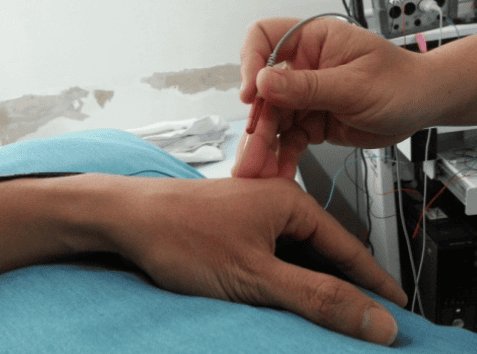
Kỹ thuật điện cơ cho phép chẩn đoán hỗ trợ bệnh ngộ độc thịt
5. Treatment of botulism
5.1. Poison control
Antitoxins are the main treatment option for botulism and should be used as soon as possible after botulism is diagnosed. If the clinical picture is typical: The patient is alert and has bilateral cranial nerve signs with symmetrical muscle weakness and progressive symptoms, with an epidemiology of canned food, antitoxin should be started as soon as possible and as soon as possible. after a definitive test. Botulism Antitoxin Heptavalent is the only antidote for Clostridium botulinum infections. Currently, Vietnam does not have this type.
Various forms of botulinum antitoxin therapy are available worldwide. In the United States, there are two antitoxin therapies for botulism. Horse serum heptavalent botulism antitoxin is used to treat children over one year of age and adults; Botulinum immu globulin is a Human Poisoning Immunoglobulin (known as BIG-IV or Baby BIG) available for intravenous use in infants under one year of age diagnosed with botulism. toxicity in infants. BIG-IV should be given as soon as possible during illness.
In 2013, the US Food and Drug Administration (FDA) first approved this drug. The drug formulation contains immunoglobulin fragments, Fab and F(ab') 2, which are active in neutralizing 7 toxins of the bacterium Clostridium botulinum.
FDA says Botulism Antitoxin Heptavalent is made from horse plasma, licensed based on animal tests. They are made from fragmented horse antibodies so are less risky than other antidotes. Botulism Antitoxin Heptavalent helps patients reduce the risk of serious side effects.
This probiotic has not been clinically tested on humans because it is not feasible and violates medical ethics. Before that, in 2007, the US national antibiotic warehouse added Botulism Antitoxin Heptavalent for emergency use.
According to Reuters, Botulism Antitoxin Heptavalent is manufactured by Winnipeg company of Cangene Corp, based in Canada. The drug development project was funded by the US Department of Health and Human Services $427 million. In addition to the botulinum antidote for adults, the FDA approved BabyBIG to treat infants.
5.2. Supportive treatment
Food poisoning requires enemas, laxatives if not blocked. Antibiotics are not recommended for botulism in infants or for adults with suspected gastrointestinal toxicity because C. botulinum in intestinal fluids may increase the toxin availability and worsen toxicity. .
Thuốc nhuận tràng có thể được sử dụng để điều trị hỗ trợ
6. Prevention of botulism
You can prevent botulism with the following methods:Do not consume food from spoiled cans (canned goods with slits, holes, dents or bulges). Botulinum toxin is heat-labile; Therefore, boiling home canned food at least 10 minutes before consuming will make the food safe. The prevention of botulism in infants is limited to the avoidance of honey in infants younger than 12 months; Older children can safely eat honey. Wound poisoning is a careful examination and prompt treatment of infected wounds. Injecting drugs should be avoided. Botulism is a dangerous disease that needs to be detected early, differentiated, and promptly treated. Hopefully the information shared in the above article has helped readers better understand this disease as well as clearly distinguish it from other diseases.
Vinmec International General Hospital is the address for examination, treatment and prevention of diseases. When performing the examination process at Vinmec, customers will be welcomed and used modern facilities and equipment along with perfect medical services under the guidance and advice of experts. Good doctors, well-trained both at home and abroad.
Please dial HOTLINE for more information or register for an appointment HERE. Download MyVinmec app to make appointments faster and to manage your bookings easily.
References
P Samuel Pegram, MD, FACP; Sean M Stone, MD. Botulism; 2020 UpToDate, Inc. and/or its affiliates. All Rights Reserved Guidelines for diagnosis and treatment of musculoskeletal diseases (Issued together with Decision No. 361/QD-BYT January 25, 2014 of the Minister of Health) Zing news. Electronic magazine. Online knowledge. Managing agency: Vietnam Publishing Association. Press license: No. 75/GP-BTTTT





